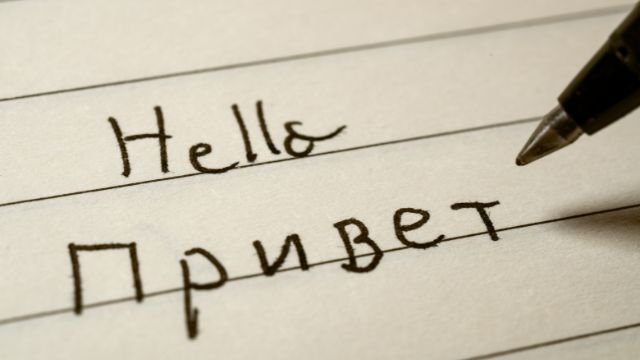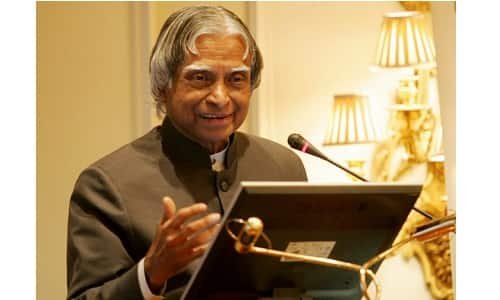Did you know that what are the most spoken language in Europe? or most common language spoken in Europe. Well here in this post you are going to know number of languages speaks in Europe and answer of your query which language is most spoken in Europe? Well with almost 200 languages spoken there, Europe is a linguistic mosaic.
This linguistic tapestry has been influenced by its cultural diversity, convoluted history, and close closeness to other languages. Europe’s languages, which enable communication and unification across boundaries, show its heritage and connection, ranging from the Romance languages of the Mediterranean to the Slavic tongues of the East.
The cultural and linguistic variety of the continent of Europe is immense. Travelling throughout the nations can also demonstrate how extensive this variation is. Because of this, Europe is one of the most popular travel destinations for tourists, scholars, and businesspeople worldwide. Speaking one or more of the languages on this list can provide access to millions of people as well as new chances on the personal and professional fronts.
Most Spoken Languages in Europe
| Rank | Language | Number of Speakers (Millions) | Primary Countries of Use |
| 1 | Russian | 145 | Russia, Ukraine, Belarus, Kazakhstan |
| 2 | German | 97 | Germany, Austria, Switzerland, Luxembourg |
| 3 | French | 77 | France, Belgium, Switzerland, Canada |
| 4 | Spanish | 53 | Spain, Mexico, Argentina, Colombia |
| 5 | Italian | 62 | Italy, Switzerland, San Marino, Vatican City |
| 6 | English | 51 | United Kingdom, Ireland, Malta, Cyprus |
| 7 | Turkish | 81 | Turkey, Cyprus, Northern Cyprus |
| 8 | Polish | 40 | Poland, Belarus, Lithuania, Ukraine |
| 9 | Dutch | 28 | Netherlands, Belgium, Suriname, Aruba |
| 10 | Swedish | 10 | Sweden, Finland, Åland Islands |
1. Russian
With almost 145 million speakers, Russian will continue to be the most common language in Europe in 2023. In addition to being extensively spoken in Belarus, Kazakhstan, and Ukraine, it is the official language of Russia. It’s also the language of space and one of the most widely spoken languages on Earth. Because both Russian and English are used on the International Space Station, astronauts must study Russian before they launch into orbit.
2. German
German has 97 million speakers, placing it in second place. It has a long literary legacy and is the official language of Germany, Switzerland, Austria, and Luxembourg. German is the most widely spoken language in the European Union (EU), despite being the second most spoken language overall in Europe. When you speak English, you might be shocked at how much German you already know—their vocabulary overlaps by roughly 60%!
3. French
With 77 million speakers, French is the third most widely spoken language in Europe. In addition to being extensively spoken in Canada, it is the official language of Belgium, France, and Switzerland. 45% of the vocabulary is borrowed from English, but the grammar and pronunciation are very distinct. You can communicate with individuals in Luxembourg, France, Switzerland, Belgium, and Monaco when you learn French.
4. Spanish
With 53 million speakers, Spanish comes in fourth place. It ranks as one of the most extensively spoken languages in the globe and is the primary language in Spain and Latin America. However, you might be shocked to learn that a sizable portion of them reside in close by nations like France and Portugal. In actuality, Spanish is the native language of roughly 10% of the people in France.
5. Italian
Italy, San Marino, Switzerland, and the Vatican City all have 62 million native speakers of Italian. It is renowned for its gastronomy, culture, and art. The fact that the Italian language only contains 21 letters is interesting. There are no words in Italian that begin with J, K, W, X, or Y. Additionally, you could hear people using various Italian dialects wherever you are in the country. Sometimes the dialects are so dissimilar that even native speakers have trouble communicating!
6. English
51 million people in Europe speak English, and it is the official tongue of the UK, Malta, Ireland, and Cyprus. On the continent, it is also frequently used as a second language. In terms of vocabulary, English ranks as one of the languages with the quickest growth. Every year, hundreds of new words are added to the official dictionaries. While picking up new terminology may be simple, pronouncing it in English is a different story.
7. Turkish
The official language of Turkey is Turkish, which is also spoken in Cyprus and Northern Cyprus and has 81 million native speakers. While the majority of Turkey does not physically belong in Europe, 3% of its territory does. In that tiny area, 20% of the nation’s people reside. Turkish has a long history and has been greatly impacted by languages such as Arabic and Persian. In actuality, the Arabic alphabet was used in Turkish before 1928 in place of the Latin alphabet.
8. Polish
40 million people in Poland, Lithuania, Belarus, and Ukraine are native speakers of Polish. It is renowned for its distinctive phonology and has a long literary history. There are a few words that are similar in both English and Polish, but they are mostly all food-related. For instance, pierogies, a sort of dumpling, and kielbasa, a sausage. Polish and other Slavic languages such as Russian, Serbian, and Ukrainian also share certain characteristics.
9. Dutch
28 million people speak Dutch, mostly in the Netherlands and Belgium. Aruba and Suriname both speak it. It is a Germanic language, making it somewhat connected to both German and English. Additionally, it has some (but hardly any) mutual intelligibility with Afrikaans, the national tongue of South Africa.
10. Swedish
Swedish rounds out the top 10 with 10 million speakers. Finland, Sweden, and the Land Islands all speak it as its official language. Swedish is a fascinating language because its current spoken form has only been around for 500 years. Danish had a significant impact on it earlier. Even now, there are many parallels between Swedish, Danish, and Norwegian.
Some Facts about European Languages
The cultural, historical, and geographic diversity of Europe is reflected in the complex tapestry of languages that make up the continent.
Below are some facts:
- Language Diversity: With over 200 distinct languages spoken, Europe constitutes one of the linguistically diverse regions in the world. The complicated history of the continent and the coexistence of several ethnic and cultural groups are to blame for this variety.
- Indo-European Family: The Indo-European language family is home to the bulk of the European languages. English, Italian, German, Spanish, French, and Russian are all members of this family. The Indo-European language family is one of the biggest in the world.
- Language Isolation: Some European languages are regarded as language isolates because there is no evidence linking them to any other linguistic family. One such language is Basque, which is spoken in the Basque Country in France and Spain. Linguists continue to disagree over its genesis.
- Celtic Languages: Scottish Gaelic, Welsh, and other Celtic languages are still used in some areas of the British Isles. These languages have a long history and are renowned for their unique writing systems and sounds.
- Romance Languages: Spanish, Italian, French, Portuguese, and Romanian are all members of the Romance language family. These languages, which descended from Latin, have much in common in terms of vocabulary and syntax.
- Slavic Languages: Eastern and Central Europe are home to many Slavic-speaking countries. Bulgarian, Polish, Czech, and Russian all belong to this language family. The most frequently used Slavic language is Russian, which uses the Cyrillic alphabet.
- Nordic Languages: The northern parts of Europe are home to speakers of Nordic languages like Finnish, Danish, Norwegian, Swedish, and Icelandic. The phonology and grammar of these languages are renowned for being distinctive.
- Multilingualism: Many people in Europe are bilingual and frequently speak many languages. This can be attributed to elements including physical proximity to other nations, the effect of nearby languages, and the European Union’s support for multilingualism.
- Language Restoration: In Europe, endangered or minority languages have been restored. For instance, the Welsh government has made efforts to encourage the use of Welsh in Wales.
- Language Policy: There are many different language policies in Europe. Other nations, like France, have severe language laws that safeguard their native tongues, whilst some, like Switzerland, have numerous official languages.
- Language borrowing: Because of historical ties and cultural exchanges, European languages frequently borrow words and phrases from one another. For instance, Latin, French, and German have all been heavily influenced by English.
- Preservation of Indigenous Languages: Indigenous languages in Europe, like Sami in Scandinavia and Sorbian in Germany, are still being preserved and documented.
Conclusion
Each of these languages contributes to the distinctive identity of the continent and reflects the linguistic diversity and cultural richness of Europe in 2023. Europe’s unique linguistic environment is steeped in history. Finding out how each language evolved and how they relate to one another is quite interesting. Your horizons will be expanded and doors to new people and places will be opened by learning any of the languages on this list.

Rahul Kumar is a passionate educator, writer, and subject matter expert in the field of education and professional development. As an author on CoursesXpert, Rahul Kumar’s articles cover a wide range of topics, from various courses, educational and career guidance.




